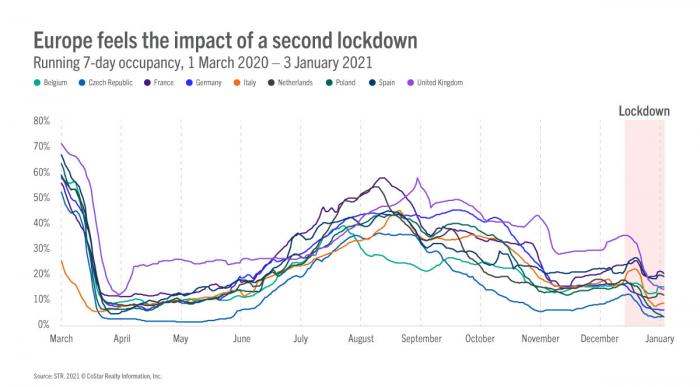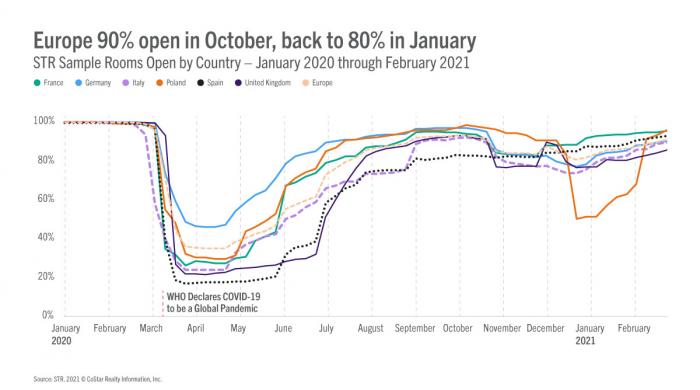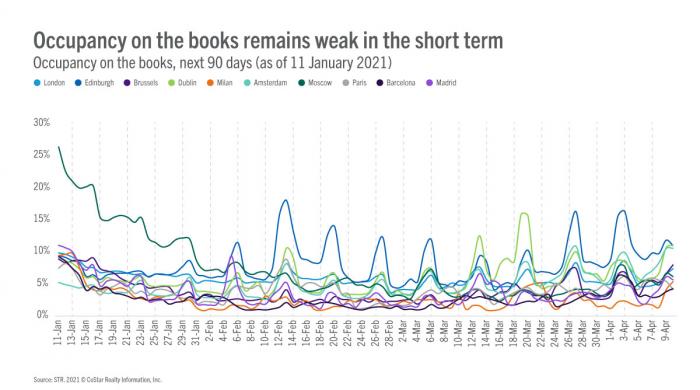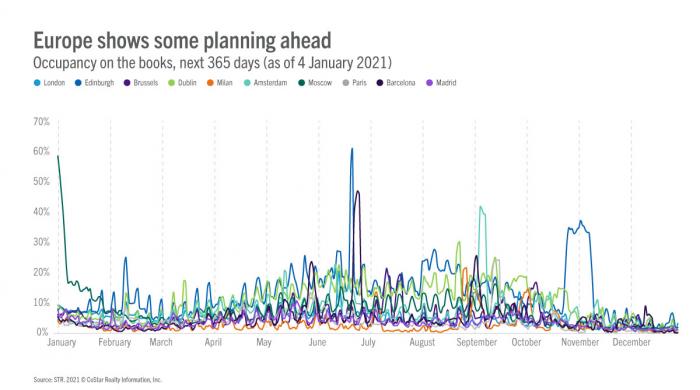There’s a saying that “before things get better, they’ll get worse.” Unfortunately, Europe is aligning with that philosophy. Hotel performance will get better, but hoteliers are going to need to exercise a lot of patience in the meantime.
Europe ended 2020 the same as most other regions—with record-low performance. Occupancy fell to 33.1%, average daily rate (ADR) dropped to a mere EUR90.89 and revenue per available room (RevPAR) sank to just EUR30.05.
April was the worst-performing month for the year, as occupancy decreased to 11.4% due to tight restrictions across the continent. Things were looking up for Europe as summer rolled around and those restrictions ultimately eased. The warmer weather was surely good to hotels, as monthly occupancy reached a pandemic high of 43.3% in August. Performance worsened, however, as restrictions once again tightened after a new variant of COVID-19 was discovered. With more people back in lockdown, Europe ended the year with its lowest occupancy level since May.
Unfortunately, performance has not gotten much better since the early phase of that lockdown in December.



